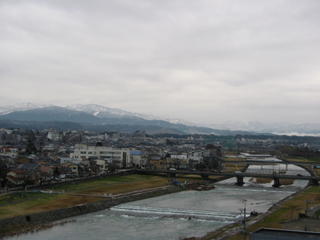
I write this sitting on the deck of my boat at the entrance of Montrose Harbor. It is a warm Sunday afternoon in August and I am trying to read. Out here in the sun there is a constant stream of watercraft passing before me, creating a monotonous din similar to the black boxes you can buy that produce white noise to help lull you to sleep.
As the day goes by transitioning through twilight and finally night, the boats are tucked into their slips, the boaters depart for where about unknown, the police chase the hangers-on out of the park and the sound of cars on Lake Shore Drive surface to replace the din of the passing vessels at the harbor mouth. It may be blasphemous to say, but noise emanating from the speeding vehicles on LSD is a good imitation of surf breaking against the pristine shores of Florida’s Panhandle or the barrier islands of the Carolina's.
During my recent trip to Japan I noted that the country is immersed in white noise. From the tinkling fountains just outside our room in the ryokan’s (traditional Japanese inn) we stayed in to the water streaming past every door in the quaint mountain town of Takayama or the rushing streams coursing through the metropolis of Kanasawa. There is some thing comforting and oddly motivating in the constant flow of cold mountain water in Japan’s cities and countryside as it searches for its final destination in the sea.
And the one thing I am most familiar with about Japan, chanoyu, the tea ceremony, has a multitude of sources for white noise. The sound present from numerous objects used during the preparation of tea: some natural, others man-made. I even think the faint hint of incense that lingers in the tearoom synergistically fosters the calming effect that white noise tends to produce.
There are several different schools of chanoyu and the Urasenke tradition, of which I am a member, has the largest presence outside of Japan. We visited the headquarters this year and took instruction in tea for two mornings from several gyotei sensei (professors). To better accommodate us, our group of thirty teachers and students is split into beginning and advance groups. The sessions are held in tearooms located in Urasenke's 400-year-old compound in Kyoto.
After being introduced to our instructors a short orientation is given and I settle in with my small class. I kneel as best I can in the tearoom listening intently and watching my fellow students perform the specific teas that were assigned to them. Though unable to see through the shoji screen walls, we are surrounded by an ancient manicured garden and the sounds of the garden, and the nature they represent, begin to filter in to my consciousness.
The quiet cacophony distracts me and I find it hard to concentrate on the lesson at hand, but I am not sure anyone else in the room notices my inattention or the sounds of the out side world. Voices identify themselves: birds, squirrels, insects and the rustling of the leaves from a warming spring breeze.
I am hearing, as water pours from the ladle into the chawan to start the purification process that begins the tea ceremony, a life and death drama begin and play out. A struggle between the magnificent crows that are ever-present in Japan and a mother squirrel protecting her off spring.
As I listen, matcha is whisked into hot water, placed on the tatami mat before a beautifully kimono-clad student and I have one of those full circle moments. Here, surrounded by the ultimate expression of human culture and sophistication, while just a breath away through paper-thin walls, nature in a raw expression of survival is playing out.
At that moment, as if on cue, the teacher abruptly slides the shoji screen open and the outside world rushes in. At once breaking the spell the sound has had on me and at the same time confirming my thoughts that we are rooted in the natural world and that for all our sophistication, we are not separate from nature and its consequences.